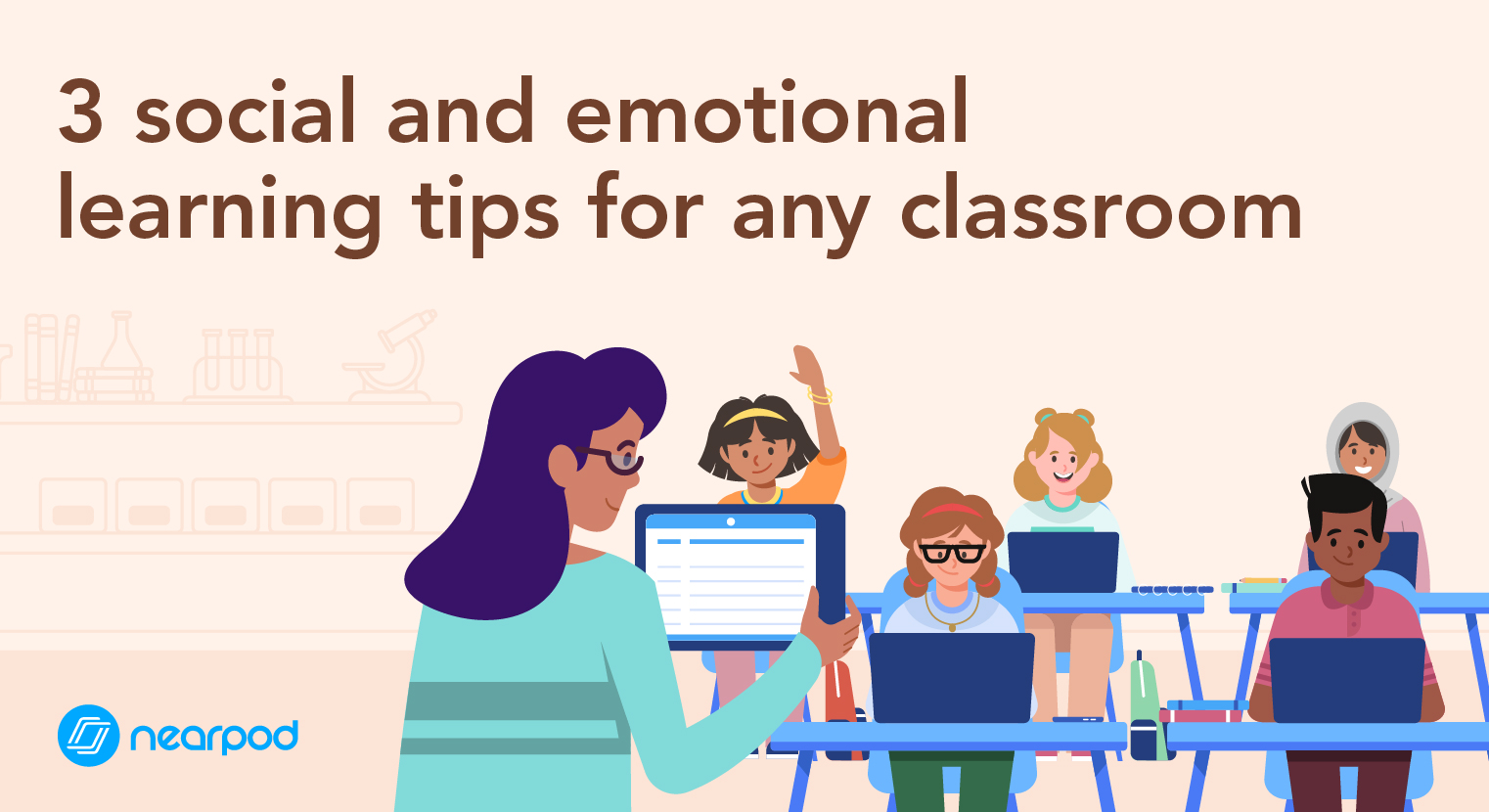
3 social and emotional learning tips for any classroom
Social and emotional learning (SEL) skills help children and adults become better people in and out of the classroom. The Collaborate for Academic, Social, and Emotional Learning (CASEL) constructed a framework of five core competencies of SEL: self-awareness, self-management, social awareness, responsible decision-making, and relationship skills.
Research shows enhancing social and emotional learning using SEL resources that address CASEL’s five core competencies significantly improves not only social and emotional skills, but behavior, attitudes, employment, classroom management, and academic achievement. Durlak et al. (2011) notes an 11-percentile-point gain in student academic achievement for SEL participants. In addition, scientific studies show the benefits of SEL filtering into multiple fields will impact participants for years to come.
The benefits speak for themselves, and yet for many educators, it’s difficult to find the time and proper resources to focus on developing and strengthening SEL. So, the question is: How might educators include SEL skills in their day-to-day learning to take advantage of the proven benefits? Here are 3 social and emotional learning tips for any classroom.
3 social and emotional learning tips for any classroom
1. Embed SEL into your daily lesson plans and learning experiences
SEL doesn’t need to be a separate curriculum; after all, SEL principles are at the core of learning and development. Nearpod’s 21st Century Readiness Program provides an easy way to integrate SEL practices like positive interactions, gratitude, and reflective moments into daily learning to help create safe, inclusive, and effective classroom environments. The key is intentionality. When SEL practices are thoughtfully selected and used authentically, they have greater power to be effective.
- Use Nearpod’s Collaborate Board interactive feature in your lessons to facilitate positive interactions among classmates
- Add a Think-Pair-Share activity or Class Discussion slide to a lesson to encourage relationship building and promote social skills
- Include a Poll at the beginning or end of your lesson to gather student feedback, collect a formative assessment of emotions, or provide a reflective moment
- Add a Draw It activity to provide a journaling opportunity for students to express their feelings
2. Build and strengthen your own social and emotional learning skills
As an educator, developing your own SEL skills can have a positive impact on your personal and professional life. The more you practice SEL, the more you become capable of modeling, encouraging, and teaching these essential skills to your students. Try viewing your role as an educator through the lens of the five core competencies of SEL to enhance your teaching and enrich your classroom environment.
3. Consistently integrate SEL into classroom routines
Consistent SEL practice, even small steps, will result in productive habits that shape student learning and life experiences. When educators are intentional about the frequency and purpose of SEL practice, classroom routines and learning environments are strengthened and enhanced.
- Use Nearpod as a check-in to build routines and create a comfortable learning environment.
- Add an Open-Ended Question, Draw It, or Collaborate Board to a lesson on the fly with Quick Launch as you see an opportunity to intentionally engage in SEL-integrated instruction.
By infusing SEL into your daily lesson plans and learning experiences, building and strengthening your own SEL skills, and being consistent in integrating SEL, you provide your students with the opportunity for improved behavior, attitudes, employment, classroom management, academic achievement, and social and emotional skills. When educators prioritize intentionally, consistent SEL they work to create an effective classroom environment with better-managed classes and healthier and happier students. Teaching social and emotional learning is a win-win for teachers and students!
Nearpod’s 21st Century Readiness K-12 Program offers resources to embed 21st-century skills like SEL, digital citizenship, and college and career readiness into every classroom. The Social and Emotional Learning collection includes lessons and activities that teach students core competencies, critical thinking, lifelong learning strategies, and growth mindset practices.
References
CASEL.org. Social Emotional Learning competencies. (2021).
Durlak, J. A., Weissberg, R. P., Dymnicki, A. B., Taylor, R. D. & Schellinger, K. B. (2011). The impact of enhancing students’ social and emotional learning: A meta-analysis of school-based universal interventions. Child Development, 82(1): 405–432.

Jessica Clarke is the Curriculum Manager at Nearpod.

